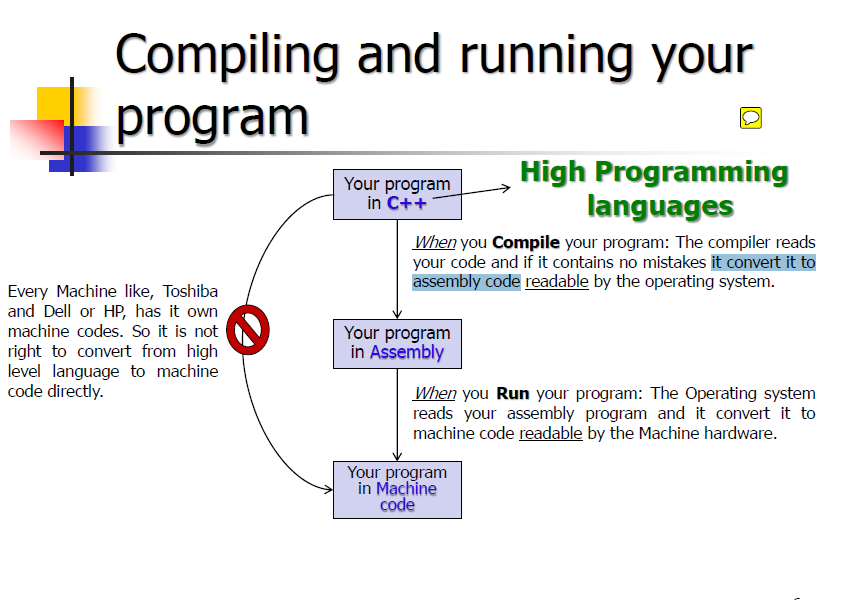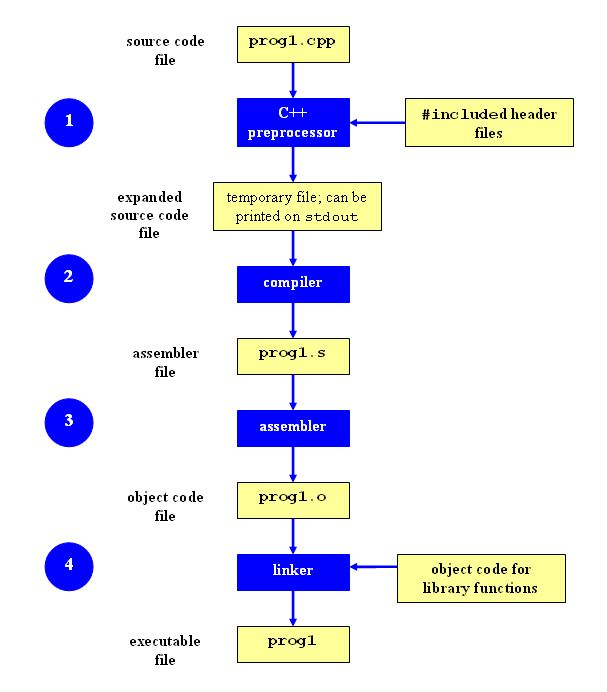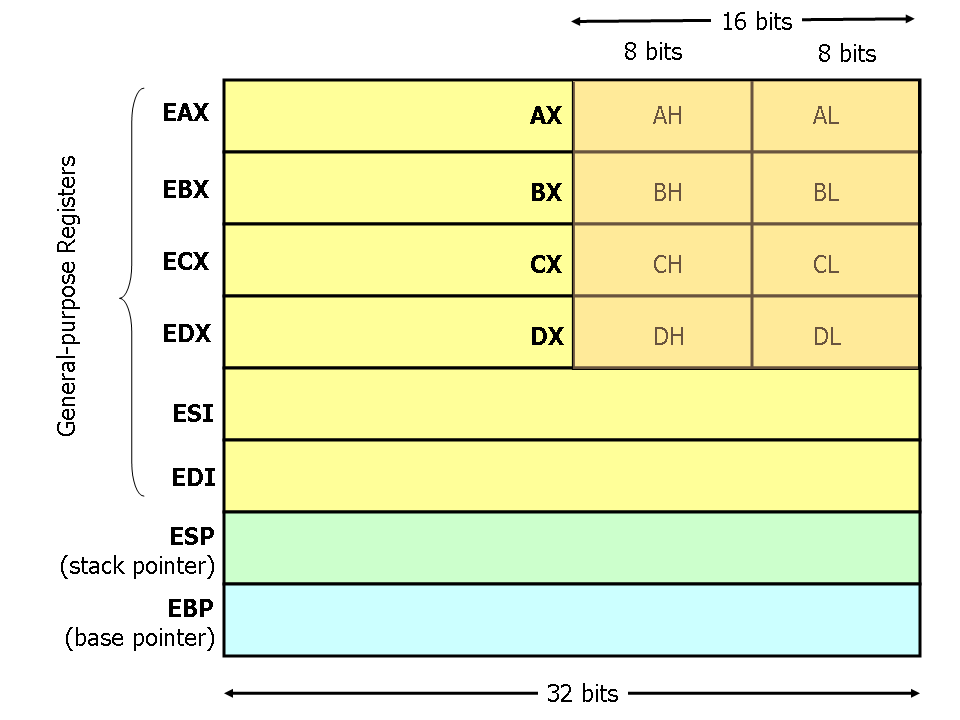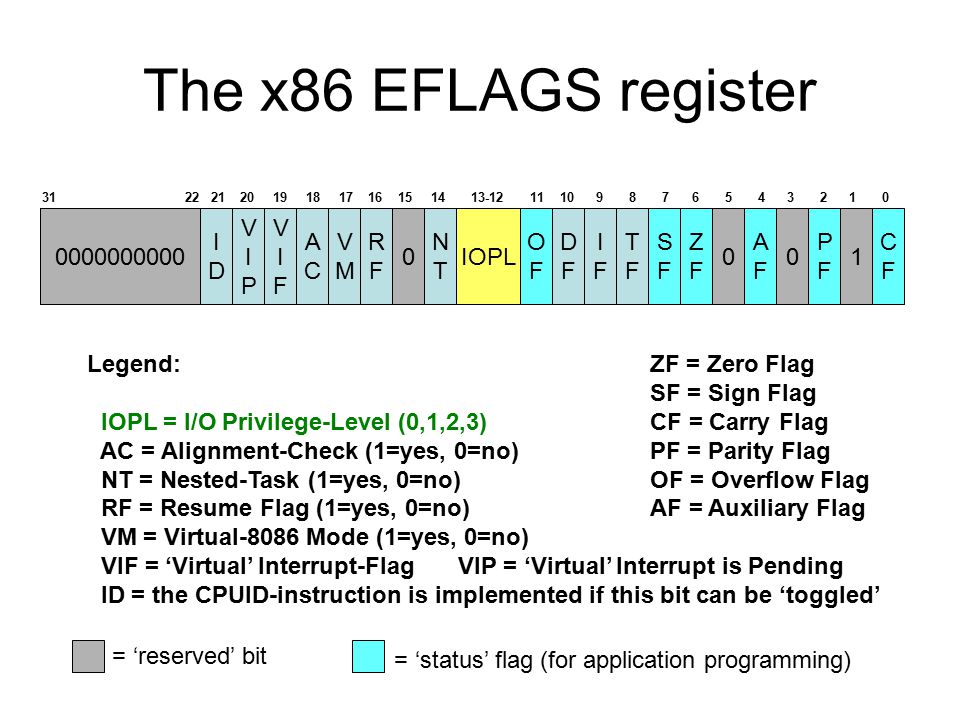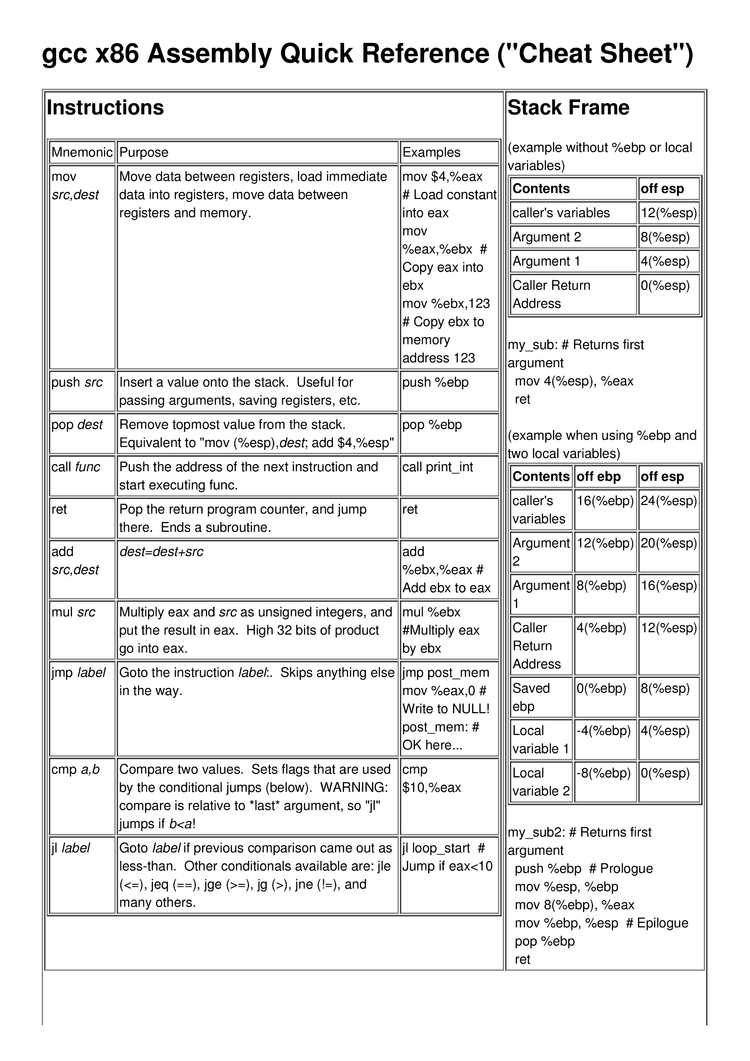This is a structured README for x86 assembly, it is written in the easiest language possible with real world examples. 📓
| Intel Type | Bits | Name |
|---|---|---|
| - | 8 Bit | BYTE |
| 8086 | 16 Bit | WORD |
| i386 | 32 Bit | DWORD |
| x86 | 64 Bit | QWORD |
dword = DWORD = (double-word)
qword = QWORD = (quad-word)
On 32 Bit ARM CPUs a WORD is 32 Bit.
(Older Text from the University of Virginia Computer Science (2006), one of the best Guides for x86 Assembly)
Modern (i.e 386 and beyond) x86 processors have eight 32-bit general purpose registers, as depicted in Figure 1. The register names are mostly historical. For example, EAX used to be called the accumulator since it was used by a number of arithmetic operations, and ECX was known as the counter since it was used to hold a loop index. Whereas most of the registers have lost their special purposes in the modern instruction set, by convention, two are reserved for special purposes — the stack pointer (ESP) and the base pointer (EBP).
For the EAX, EBX, ECX, and EDX registers, subsections may be used. For example, the least significant 2 bytes of EAX can be treated as a 16-bit register called AX. The least significant byte of AX can be used as a single 8-bit register called AL, while the most significant byte of AX can be used as a single 8-bit register called AH. These names refer to the same physical register. When a two-byte quantity is placed into DX, the update affects the value of DH, DL, and EDX. These sub-registers are mainly hold-overs from older, 16-bit versions of the instruction set. However, they are sometimes convenient when dealing with data that are smaller than 32-bits (e.g. 1-byte ASCII characters).
When referring to registers in assembly language, the names are not case-sensitive. For example, the names EAX and eax refer to the same register.
In x86 registers have an 'e' in front of their name.
Example: eax, ebx, ecx, edx, ebp
Additional Info:
In x64 you have a 'r' instead.
Example: rax, rbx, rcx, rdx, rbp
You also have double-precision floating point going from xmm0 to xmm15.
